Fitbit is no stranger to the fitness tracker market. They’re even considered as one of the top brands when it comes to manufacturing fitness wearables and consumers have been eagerly awaiting their official entry into the smartwatch scene. In the middle of 2017, the brand finally did. Fitbit released its newest creation, the Fitbit Ionic, August of last year.

It’s a smartwatch jam-packed with fitness features. While they’re calling it their first Smartwatch, one could argue that the Fitbit Blaze was actually the company’s real pioneer. So, is Fitbit’s latest the best of both worlds? Let’s find out in our full review!
Table of Contents
The Fitbit Ionic is a classy looking smartwatch. It has an aluminum body that is sturdy and well-built while also having little design details like curved antenna bands on the sides. It has a boxy design with chamfered edges and a sloped top and bottom. The boxy form may not be for everyone, especially for those who are accustomed to circular watches.

Up front, you’ll be greeted by the 1.42-inch LCD touch display that’s protected by Sapphire Glass. Just below it is Fitbit’s logo. It would’ve been nice though if the company shifted the logo just below the screen in the watch’ body in order to make way for more screen space. That added bottom bezel feels like a waste.

Either way, the screen itself has good color accuracy and reproduction and icons are crisp and sharp. Brightness is also high enough for outdoor use, which should be since you’ll be using this out in the open a lot. Overall, it has a beautiful screen for a smartwatch.
At the left, we have the power/lock/back button while at the right we have two extra buttons for device navigation. These buttons are also textured for easier access.

At the bottom of the device are the optical heart rate sensor, SpO2 sensor, accelerator, motion-detection sensor, and the charging port.

The watch has a quick release strap mechanic. Although, make sure to push in the straps you install firmly as there is no clear “click” when inserting them. This does make it easy to swap straps, but harder to find in the market. Thankfully, Fitbit included a long and short strap in the package.
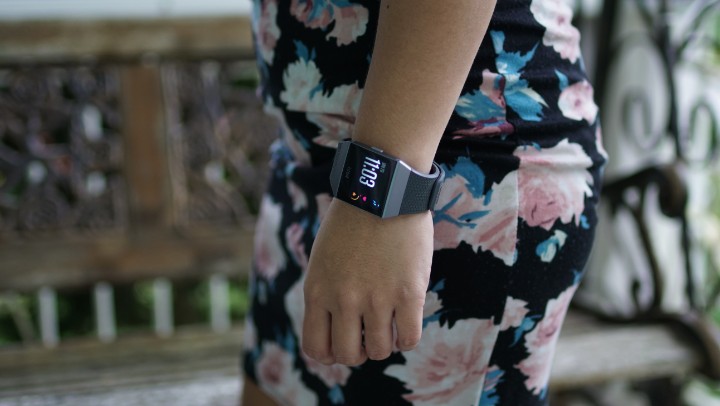
Being a smartwatch with emphasis on fitness, Fitbit equipped the Ionic with 50 meters of water resistance. So, showering, swimming, and even running in the rain with the device is certainly possible.
Apart from the classy looks and tough build, the Ionic is also very comfortable and light. It does less contact with your wrist due to its angular design, which is a big relief from more common watches.
The Fitbit Ionic uses the company’s own smartwatch OS. Pre-installed apps are all homebrew but users can add a few more via the Fitbit app. The UI is clean and simple and navigation is straightforward. Tapping on the watch at its home screen will prompt a cycle through the steps you’ve taken, carbs you’ve burned, and your heart rate. Swiping left will open up the notifications tab and swiping right will let you browse through the installed apps.
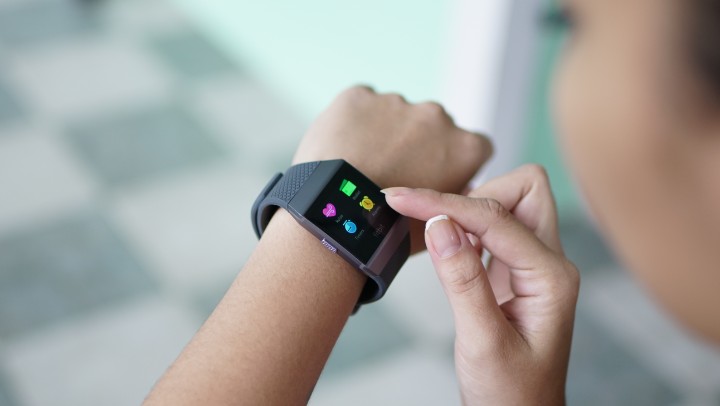
As for those two right side buttons mentioned earlier, pressing the top one opens up a tab of fitness information such as the steps you’ve taken, remaining steps for the hour, heart rate, miles traversed, calories burned, stairs climbed, and active minutes.

While the bottom button opens up the Fitbit exercise app. Occasionally, though, you’ll feel the UI slows down and lag even with just basic navigation, which can sometimes be frustrating. This occurs more often after you finish using the coach or exercise apps.
 Speaking of the mobile app, at the initial setup, you’ll be prompted to download it and pair the Ionic with your device. The app will then automatically update and setup your smartwatch. After that, you’re all set to use the Ionic. The mobile app itself serves as a central hub and operation center of the smartwatch.
Speaking of the mobile app, at the initial setup, you’ll be prompted to download it and pair the Ionic with your device. The app will then automatically update and setup your smartwatch. After that, you’re all set to use the Ionic. The mobile app itself serves as a central hub and operation center of the smartwatch.
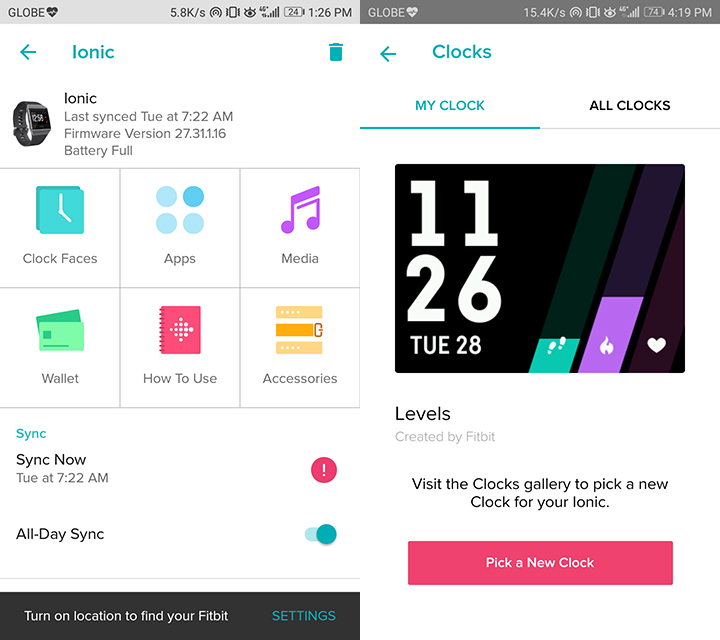
From here, you can install homebrew and third-party apps to the Ionic and change its watch face. You can also monitor your fitness activities and even track what you’ve eaten, log water intake, and check your weight and sleeping pattern, which is a pretty neat feature. Other than that, the app includes a user manual and other settings you can tinker with.
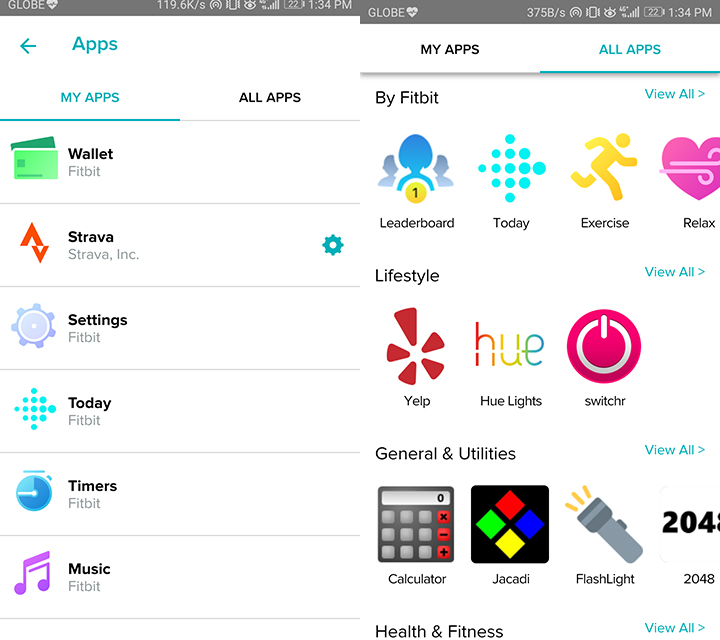
What the Ionic has in fitness features, it lacks in its app ecosystem. By using Fitbit’s own operating system, the smartwatch is limited to homemade apps and some third-party ones that the company sanctions. While its ecosystem is certainly growing by the day, it’s nowhere near the customizability you get with Android Wear.
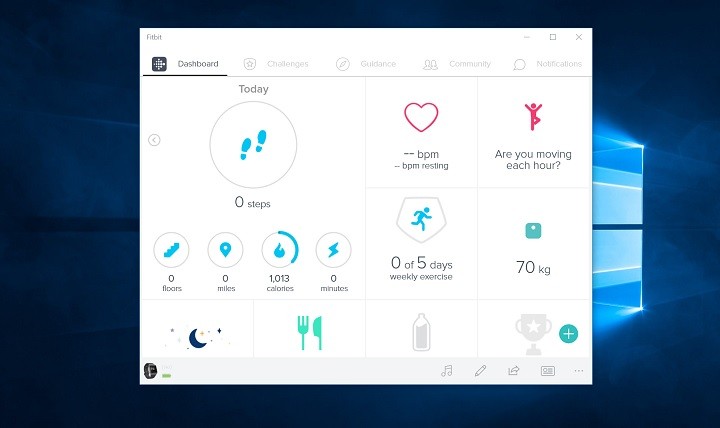
Another caveat is that, even when you’re given 2.5GB of storage for music, you have to transfer each song manually to the device from your computer. It also doesn’t help that you have to do all of that via the Fitbit software as the device has no USB port. There is also no support for any of the major music streaming services such as Spotify, which is a bummer since the watch could’ve taken advantage of it.
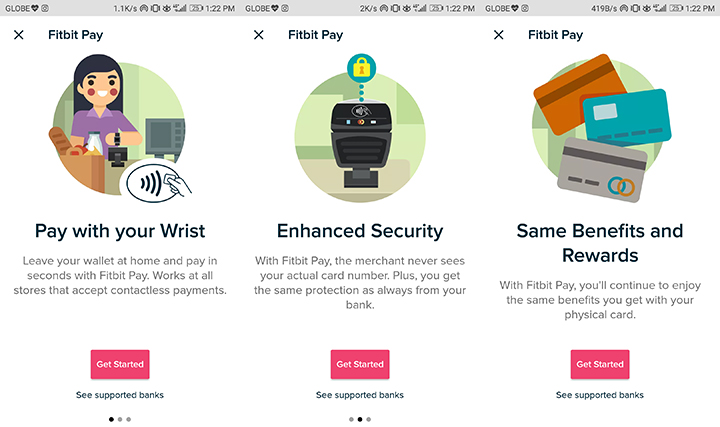
One feature we may not have a use for yet is the Ionic’s ability to make smart payments via Fitbit Pay. While the feature is certainly enticing, we’ve yet to receive word from our local banks and stores if they support Fitbit’s payment system.
Although, one could hope and, of course, this will open up a new way of easy payment. Then again, if you are traveling to another country with support for Fitbit pay and you have a supported card there, then you could take advantage of this.
The Fitbit Ionic is packed with essential connectivity options. It has WiFi, NFC, Bluetooth 4.0, and GPS. It can also receive push notifications from your phone, which you can customize via the notification settings of the Fitbit app.

Although to maintain sync between the Ionic and your device, you’ll have to keep your Bluetooth and GPS toggled, which will certainly drain the battery of your smartphone.
As for its battery life, it’s impressive. It could last up to 5 days on standby and general use and about 8-10 hours on GPS and music. You’ll definitely be plugging the smartwatch only a couple of times in the course of a month. Unless of course, you use the GPS and listen to music actively. In any case, the watch is a perfect companion for the traveling fitness geek.
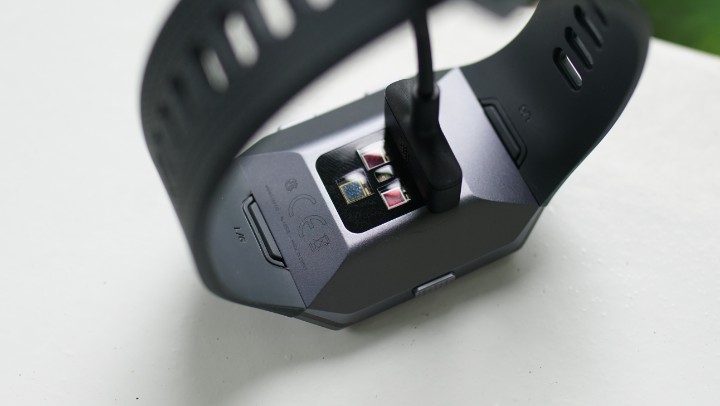
Speaking of charging, juicing up the device takes only about 40mins to an hour and the charging mechanism is magnetic. So, it could easily be plugged in and out with minimal effort.
The Fitbit Ionic boasts strong fitness features for a smartwatch. The company once again proved that it has mastered its craft in creating fitness devices. Not only that, the device is also classy, well-built, and very comfortable. It’s certainly a watch you can take with you even on casual strolls and outings.
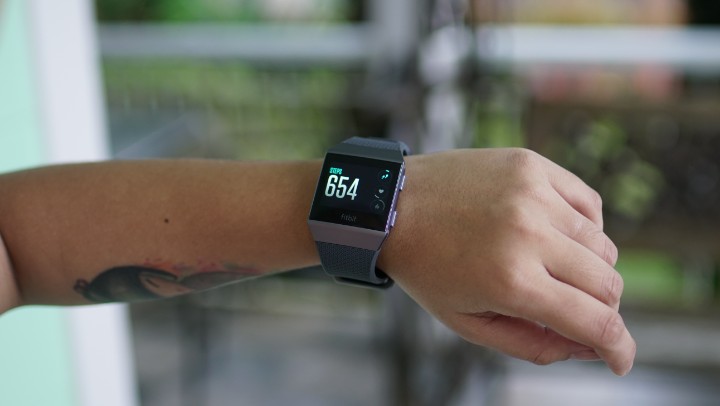
On another note, we can’t help but feel that it’s just a glorified fitness tracker. Due to the lack of apps in its ecosystem and the minimal customizations. There’s also some mishaps here and there, like the occasional slowdowns in the UI, the constant connection to your smartphone for notifications, and the tedious software setups.

Sadly, even with the strong fitness features and somewhat smartwatch functionality, the Fitbit Ionic lacks what it takes to edge out competitors. Especially for its asking price of Php 15,690. You might very well just get a fitness tracker, maybe from Fitbit themselves, or a smartwatch with some fitness features. Either way, if you are a fan of Fitbit then you might still consider the Ionic for its improved fitness features, good build, and fantastic screen.
Fitbit Ionic specs:
1.42-inch LCD display @ 348 x 250 pixels
Sapphire Glass
3-axis accelerometer
3-axis gyroscope
Optical heart rate monitor
Altimeter
Ambient light sensor
Vibration motor
WiFi antenna (802.11 b/g/n)
Bluetooth 4.0
GPS
NFC
SpO2 sensor
water resistant to 50 meters
Up to 4 days battery (standby), 10 hours (GPS, Music)
What we liked:
What we didn’t like:

YugaTech.com is the largest and longest-running technology site in the Philippines. Originally established in October 2002, the site was transformed into a full-fledged technology platform in 2005.
How to transfer, withdraw money from PayPal to GCash
Prices of Starlink satellite in the Philippines
Install Google GBox to Huawei smartphones
Pag-IBIG MP2 online application
How to check PhilHealth contributions online
How to find your SIM card serial number
Globe, PLDT, Converge, Sky: Unli fiber internet plans compared
10 biggest games in the Google Play Store
LTO periodic medical exam for 10-year licenses
Netflix codes to unlock hidden TV shows, movies
Apple, Asus, Cherry Mobile, Huawei, LG, Nokia, Oppo, Samsung, Sony, Vivo, Xiaomi, Lenovo, Infinix Mobile, Pocophone, Honor, iPhone, OnePlus, Tecno, Realme, HTC, Gionee, Kata, IQ00, Redmi, Razer, CloudFone, Motorola, Panasonic, TCL, Wiko
Best Android smartphones between PHP 20,000 - 25,000
Smartphones under PHP 10,000 in the Philippines
Smartphones under PHP 12K Philippines
Best smartphones for kids under PHP 7,000
Smartphones under PHP 15,000 in the Philippines
Best Android smartphones between PHP 15,000 - 20,000
Smartphones under PHP 20,000 in the Philippines
Most affordable 5G phones in the Philippines under PHP 20K
5G smartphones in the Philippines under PHP 16K
Smartphone pricelist Philippines 2024
Smartphone pricelist Philippines 2023
Smartphone pricelist Philippines 2022
Smartphone pricelist Philippines 2021
Smartphone pricelist Philippines 2020